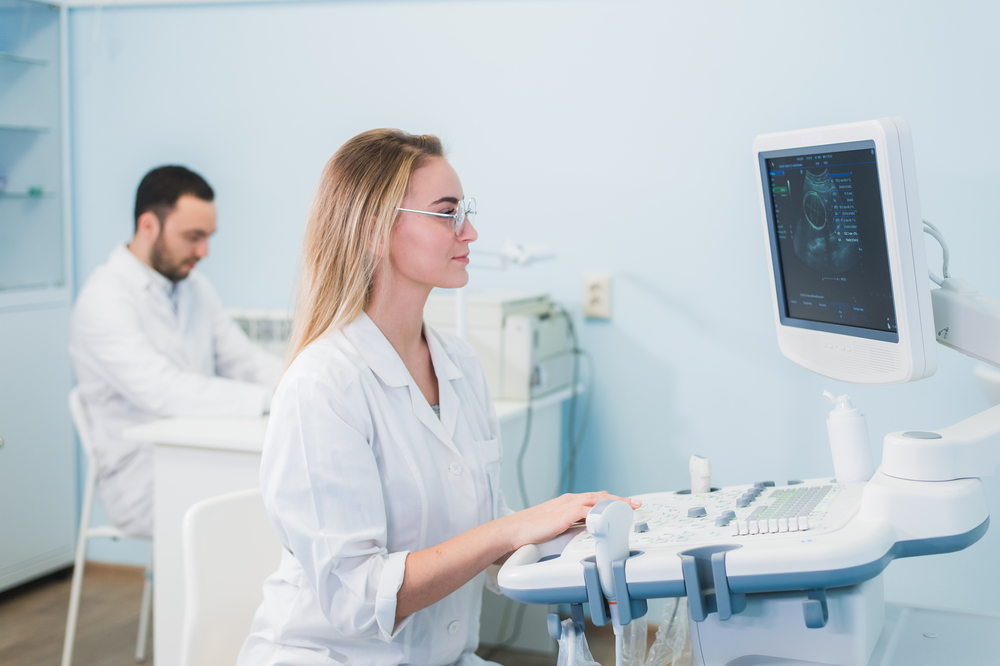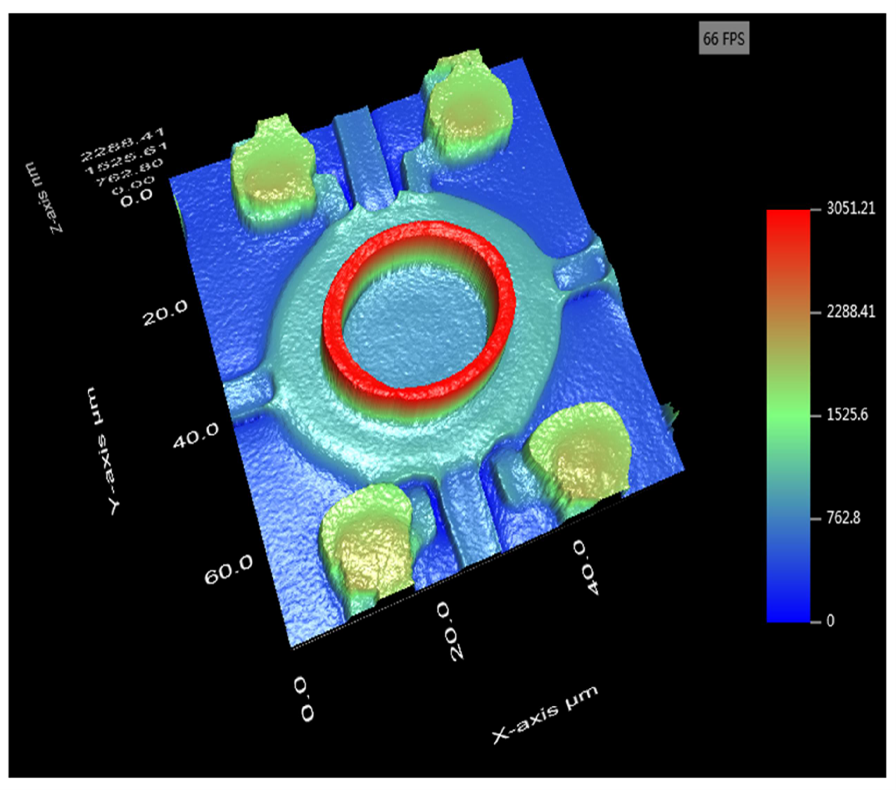Revolutions in Ultrasound Technology: cMUT and pMUT Arrays
 Advances in ultrasound technology have accelerated in the past decade, largely due to microelectromechanical systems (MEMS). The ability to machine extremely sophisticated arrays makes it possible to produce photoacoustic endoscopes that operate a level beyond traditional piezoelectrics.
Advances in ultrasound technology have accelerated in the past decade, largely due to microelectromechanical systems (MEMS). The ability to machine extremely sophisticated arrays makes it possible to produce photoacoustic endoscopes that operate a level beyond traditional piezoelectrics.
Two technologies are leading the charge and changing the way we capture real-time and 3D imaging: capacitive micromachined ultrasonic transducers (cMUTs) and piezoelectric micromachined ultrasonic transducers (pMUTs).
Advances in photoacoustic endoscopes
As a technology, photoacoustic imaging (PAI) is traditionally challenging because of the difficulty associated with machining and assembling microscopic imaging components. The advent of MEMS has enabled medical device manufacturers to overcome this hurdle, and micromachined ultrasonic transducers (MUTs) rapidly emerged at the forefront of the industry as the most powerful prospects for improving imaging.
The ability to machine precise, extremely sensitive components at a microscopic level is directly responsible for this next generation of ultrasound technology. According to a multinational research paper, MEMS Ultrasound Transducers for Endoscopic Photoacoustic Imaging Applications, published in 2020, “PAI has great potential applications in endoscopy, but the progress of endoscopic PAI was hindered by the challenges of manufacturing and assembling miniature imaging components. Over the last decade, microelectromechanical systems (MEMS) technology has greatly facilitated the development of photoacoustic endoscopes and extended the realm of applicability of the PAI.”
As ultrasound producers perfect MUTs to bring market, cMUTs and pMUTs have quickly discovered use cases across the medical spectrum.
 A closer look at cMUTs
A closer look at cMUTs
cMUTs transmit and receive acoustic signals in the ultrasonic range, measuring change in capacitance. They do this via a unique construction — a silicon substrate layer complemented by a metallized layer — which functions similarly to electrodes. This differs from traditional piezoelectric probes, which measure voltage generated by applied pressure.
Advanced machining allows cMUTs to come to market with compact form factors, higher imaging and therapy resolutions, and heightened sensitivity. These arrays operate at a large bandwidth with strong frequency in immersion applications, which is a significant advance beyond the capabilities of traditional piezoelectric imaging probes.
The power of cMUTs has already been proven in advanced probes, such as the Philips Lumify. cMUT probes deliver a higher standard of diagnostic imaging at a lower cost and in a smaller package. The bottom-line benefit is ultimately expanded accessibility, such as point-of-care ultrasound opportunities.
Delving into pMUT arrays
pMUTs derive imaging through flexural vibrations, measured by a piezoelectric membrane. Though they still utilize piezoelectric film, these arrays offer substantial benefits over probes that rely on crystals or ceramics — namely, enhanced 3D imaging via advanced resonance frequency and high reliability.
While cMUTs are the subject of many MEM-focused case studies, pMUTs can extrapolate the already-quantified benefits of traditional piezoelectrics. pMUTs offer a higher capacitance and lower electrical impedance over cMUTs to increase probe sensitivity by reducing the impact of parasitic capacitance and enabling the use of low voltage electronics.
pMUTs are already leaps and bounds beyond traditional piezoelectric arrays, but there is still room for advancement. As MEMS techniques and transducer films become more complex, future pMUTs will see larger output signals, lower loss, and higher signal-to-noise ratios.
 Improving point-of-care ultrasound
Improving point-of-care ultrasound
As photoacoustic imaging takes center stage in ultrasound innovation, cMUT and pMUT arrays are leading the advance toward more sophisticated imaging. Both technologies unlock new opportunities for diagnostic imaging and make point-of-care ultrasound more accessible and reliable to provide a higher standard of personalized patient care.
As diagnosticians look to real-time 3D imaging, there’s an increasing need for PAI arrays at every stage of patient care. Advances in MEMS production make these lifesaving devices more accessible and applicable every year.
To learn more about the care and maintenance of advanced ultrasound arrays, visit acertaralabs.com.

 A closer look at cMUTs
A closer look at cMUTs Improving point-of-care ultrasound
Improving point-of-care ultrasound